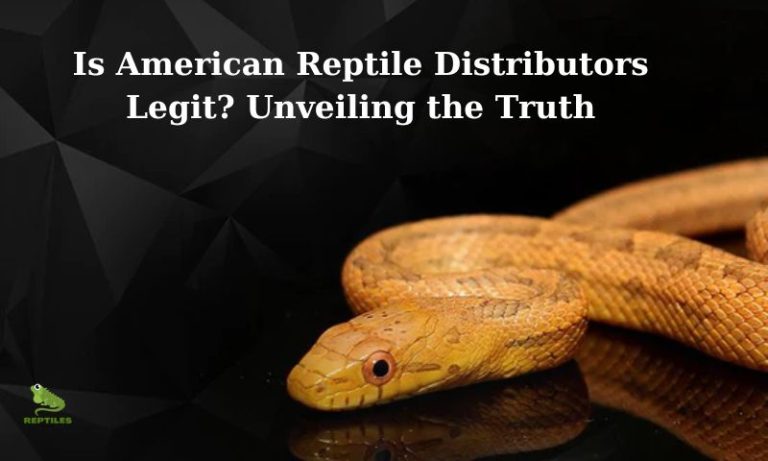Are Reptiles Cold-Blooded? Unraveling the Secrets of Reptilian Physiology
Discover the fascinating world of reptilian physiology and learn why understanding whether reptiles are cold-blooded is crucial for their survival. Read now!
When you think of reptiles, what comes to mind? Maybe it’s a slithering snake or a scaly lizard basking in the sun. Reptiles are captivating creatures with unique biology, including being cold-blooded. But what does it really mean for a reptile to be cold-blooded, and why is it essential to understand this aspect of their physiology?
Cold-blooded animals, also known as ectotherms, rely on external sources of heat to regulate their body temperature. Unlike warm-blooded animals, which can internally regulate their temperature, reptiles rely on their environment to stay warm. This understanding of reptilian physiology is crucial for their survival and conservation.
In this article, we’ll dive deep into the intricacies of reptilian biology, exploring the science behind cold-bloodedness. We’ll learn how reptiles balance their body temperature, adapt to their environment, and the impact their surroundings have on their survival. By the end of this article, you’ll have a newfound appreciation for these remarkable creatures and the significance of understanding their physiology.
What Does It Mean to Be Cold-Blooded?
![]()
Explaining Cold-Bloodedness
Being cold-blooded means that a reptile’s body temperature is primarily influenced by the temperature of its surroundings. When a reptile feels cold, it seeks out a warm spot to bask in, like a sunny patch or a cozy rock. Conversely, when it gets too hot, the reptile looks for a cooler place to avoid overheating.
Contrasting Warm-Blooded Animals
Unlike reptiles, warm-blooded animals such as mammals and birds can internally regulate their body temperature. Through metabolism, they generate heat, allowing them to maintain a relatively steady body temperature, regardless of their environment. This flexibility enables them to thrive in a wide range of temperatures and environments.
Benefits and Drawbacks of Being Cold-Blooded
Being cold-blooded has its perks. Reptiles require less energy to maintain their body temperature, which means they can survive on less food compared to warm-blooded animals. Additionally, they can thrive in extreme environments such as deserts or arctic regions, where warm-blooded animals would struggle.
However, being cold-blooded also has its downsides. Cold-blooded animals have limited ability to regulate their body temperature in response to changing conditions, making them more susceptible to extreme temperatures. Moreover, they become less active in colder temperatures, which can impact their hunting, mating, and escaping abilities.
Reptilian Physiology
Reptiles have a unique anatomy that allows them to thrive in their environment. Their bodies are covered in scales, which serve as protection and help prevent water loss. Additionally, their lungs are more efficient than those of amphibians, facilitating better gas exchange.
One of the most captivating aspects of reptilian physiology is how they regulate their body temperature. As ectotherms, reptiles rely on external heat sources to warm their bodies. This can involve basking in the sun, seeking out warm surfaces, or even adjusting their body temperature through behavioral adaptations like burrowing or changing posture.
Reptiles possess an incredible ability to adapt to their environment and adjust their body temperature accordingly. For instance, some desert-dwelling reptiles withstand scorching temperatures by burrowing underground during the hottest parts of the day and resurfacing at night when it’s cooler.
Overall, the physiology of reptiles is a captivating topic that showcases the unique adaptations of these cold-blooded creatures. Understanding how they regulate their body temperature and adapt to their surroundings deepens our appreciation for their complexity and their importance within our ecosystem.
The Science Behind Cold-Bloodedness
Reptiles, like other cold-blooded animals, possess a distinctive physiology that enables them to survive in diverse environments. One key aspect of this physiology is their metabolism, which plays a vital role in regulating their body temperature.
The Role of Metabolism in Cold-Blooded Animals
Metabolism refers to the chemical processes within an organism that sustain life. In cold-blooded animals, metabolism is directly linked to their body temperature. When the environment is warm, their metabolism increases, leading to improved movement and hunting efficiency. Conversely, in colder conditions, their metabolism slows down, conserving energy and reducing activity levels.
Contrasting Reptilian Metabolism with Warm-Blooded Animals
Reptilian metabolism varies significantly from that of warm-blooded animals. While warm-blooded animals can internally regulate their body temperature, reptiles depend on external heat sources to warm themselves. This means that their metabolism is closely tied to their environment, and they must adapt their behavior to maintain their body temperature.
The Evolutionary Advantages of Cold-Bloodedness
Despite the challenges presented by their unique physiology, cold-blooded animals, including reptiles, possess several evolutionary advantages. They can survive in environments that warm-blooded animals find inhospitable, such as deserts and arctic tundras. Additionally, they conserve energy by adjusting their activity levels to changes in their environment.
In conclusion, the science behind cold-bloodedness in reptiles is captivating and offers profound insights into their survival strategies. By understanding the role of metabolism in regulating their body temperature, we develop a greater appreciation for these incredible creatures and their ability to thrive in various environments.
Reptiles and Their Environment
Reptiles inhabit diverse environments, ranging from deserts to rainforests. As cold-blooded animals, their physiology is profoundly influenced by their surroundings. In this section, we’ll explore the impact of climate on reptilian physiology, how reptiles adapt to different environments, and the criticality of temperature regulation for their survival.
The Impact of Climate on Reptilian Physiology
Reptiles are ectothermic, meaning they rely on external heat sources to regulate their body temperature. Consequently, they are particularly vulnerable to changes in their environment, including temperature fluctuations caused by climate change. Rising temperatures can disrupt their ability to regulate body temperature, leading to decreased activity levels and an increased risk of dehydration.
Extreme weather events such as heatwaves and droughts can have devastating consequences for reptile populations. For instance, a 2019 heatwave in Australia resulted in mass deaths of flying foxes and other wildlife, including reptiles. Understanding the impact of climate change on reptilian physiology is crucial for developing effective conservation strategies to protect these vulnerable species.
How Reptiles Adapt to Different Environments
Despite the challenges posed by their environment, reptiles exhibit remarkable adaptability to a wide range of habitats. Some species, such as desert-dwelling lizards, have evolved unique adaptations to survive harsh conditions. These adaptations may include specialized kidneys that enable water conservation or the ability to burrow underground for extreme temperature avoidance.
Other reptiles, like sea turtles, have adapted to marine life. They regulate their body temperature by swimming to different depths, where the temperature is more stable. By understanding how reptiles adapt to diverse environments, we gain insight into their extraordinary resilience and their ability to thrive in various habitats.
The Importance of Temperature Regulation for Reptilian Survival
Temperature regulation is essential for reptilian survival. Reptiles need to maintain a specific body temperature to carry out crucial physiological processes such as digestion and metabolism. If their body temperature falls too low, they become sluggish and unable to hunt or defend themselves. Conversely, if their body temperature becomes too high, they risk dehydration and heat exhaustion.
Reptiles utilize various strategies to regulate their body temperature, including basking in the sun or seeking shade. Some species, like the green iguana, can adjust the color of their skin to absorb or reflect sunlight according to their needs. Understanding the significance of temperature regulation for reptilian survival empowers us to develop effective conservation strategies to protect these extraordinary animals.
Conclusion
Understanding the physiology of reptiles, particularly their cold-blooded nature, is crucial for their survival and conservation. Reptiles possess fascinating adaptations that enable them to thrive in their environment. By delving into the science behind cold-bloodedness, exploring the intricacies of reptilian physiology, and appreciating the impact of their surroundings on their survival, we develop a deeper understanding of these incredible creatures.
Thank you for joining me on this journey to unravel the question, “are reptiles cold-blooded?” If you want to learn more about reptiles and their captivating physiology, be sure to visit Reptiles Facts, your go-to source for all things reptilian.





